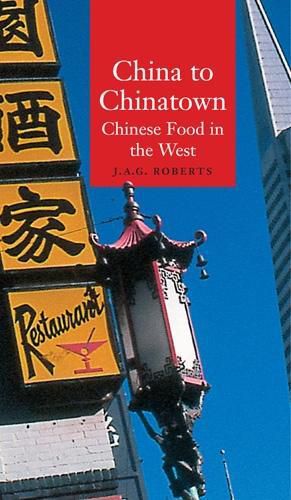Readings Newsletter
Become a Readings Member to make your shopping experience even easier.
Sign in or sign up for free!
You’re not far away from qualifying for FREE standard shipping within Australia
You’ve qualified for FREE standard shipping within Australia
The cart is loading…






China to Chinatown tells the story of one of the most notable examples of the globalization of food: the spread of Chinese recipes, ingredients and cooking styles to the Western world. Beginning with the accounts of Marco Polo and Franciscan friars who travelled to the East, J.A.G. Roberts describes how Westerners’ first impressions of Chinese food were decidedly mixed, with many regarding Chinese eating habits as repugnant. Chinese food was brought back to the West merely as a curiosity. The Western encounter with a wider variety of Chinese cuisine dates from the first half of the 20th century, when more extensive travel became possible. The author describes the spread of Chinese food to the West with emigrant Chinese communities and the relatively recent phenomenon of Chinese restaurants. He also evaluates its position in relation to other cooking styles, such as Indian, Mexican and Japanese, in the process showing how Chinese cooking has come to be regarded by some as among the world’s most sophisticated cuisines, and yet is harshly criticized by others, for example on the grounds that its preparation involves cruelty to animals. The author concludes by examining the extent to which Chinese food, as a facet of Chinese culture overseas, has remained differentiated and questions whether its ethnic identity is dissolving. Written in a lively style, the book should appeal to food historians and specialists in Chinese culture, as well as to a wide general audience interested in Chinese cuisine.
$9.00 standard shipping within Australia
FREE standard shipping within Australia for orders over $100.00
Express & International shipping calculated at checkout
China to Chinatown tells the story of one of the most notable examples of the globalization of food: the spread of Chinese recipes, ingredients and cooking styles to the Western world. Beginning with the accounts of Marco Polo and Franciscan friars who travelled to the East, J.A.G. Roberts describes how Westerners’ first impressions of Chinese food were decidedly mixed, with many regarding Chinese eating habits as repugnant. Chinese food was brought back to the West merely as a curiosity. The Western encounter with a wider variety of Chinese cuisine dates from the first half of the 20th century, when more extensive travel became possible. The author describes the spread of Chinese food to the West with emigrant Chinese communities and the relatively recent phenomenon of Chinese restaurants. He also evaluates its position in relation to other cooking styles, such as Indian, Mexican and Japanese, in the process showing how Chinese cooking has come to be regarded by some as among the world’s most sophisticated cuisines, and yet is harshly criticized by others, for example on the grounds that its preparation involves cruelty to animals. The author concludes by examining the extent to which Chinese food, as a facet of Chinese culture overseas, has remained differentiated and questions whether its ethnic identity is dissolving. Written in a lively style, the book should appeal to food historians and specialists in Chinese culture, as well as to a wide general audience interested in Chinese cuisine.